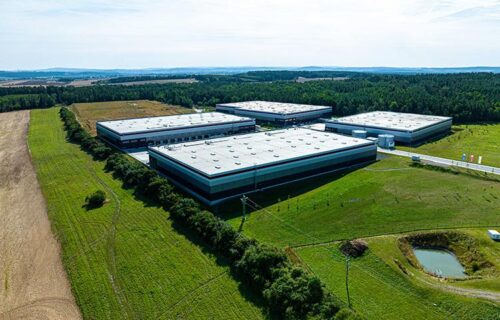Pilsen’s position in the Czech industrial and logistics market remains defined by access to Germany via the D5 and a maturing stock of modern space. As of Q2 2025, the region had about 1.83 million sq m of stock, a vacancy rate of 7.7% (above the national average), and prime headline rents up to €6.00/sq m/month—below Prague and Brno, which helps tenants on costs. Nationally, vacancy ticked up to roughly 4.0% in Q2 as demand softened quarter-on-quarter while construction activity climbed to nearly 1.2 million sq m. These dynamics point to more choice and negotiating leverage for occupiers looking at West Bohemia.
Tenant activity in 2025 has been led by logistics and transportation companies, with manufacturers following. In Q2, Czech gross take-up fell to about 305,000 sq m—around a third below the five-year average—while net take-up reached roughly 170,000 sq m. Logistics accounted for the largest share of H1 demand, consistent with the Pilsen corridor’s cross-border profile; recent leases across the country skew toward distribution and automotive-adjacent users. In the Pilsen micro-market, confirmed occupiers at P3 Plzeň Myslinka include ALLLOG Consulting, ICOM transport and WM Logistic Nýřany—illustrating a mix of 3PL, transport, and auto parts activity.
Labour conditions continue to shape site selection. Czech unemployment hovered in a low single-digit range through 2025, but availability varies by region. In the Pilsen Region, the share of unemployed persons was reported at roughly 3.5–3.7% in spring–summer 2025, with around 15,000–15,500 registered job seekers and about 7,800 vacancies—underscoring an historically tight market that nevertheless loosened slightly this summer. Wages are rising: the average gross monthly wage in Q2 2025 reached CZK 49,402 nationally; in Q1 2025, Pilsen’s average was CZK 43,498, the fourth-highest among Czech regions. For employers, that combination—still-low unemployment and upward wage pressure—makes the on-site working environment and amenities more than a “nice-to-have” when competing for staff.
Infrastructure remains a key differentiator. The region’s anchor is the D5 motorway to Bavaria, complemented by intermodal options at the METRANS terminal in Nýřany. On the rail side, national investment plans for 2025 include upgrades on sections in and around Pilsen (including the Pilsen–Nýřany–Chotěšov axis) as part of broader Czech rail modernisation financed in part by the EIB, which should incrementally improve freight flows toward Germany. These upgrades align with occupiers’ preference for locations that can mix motorway access with reliable rail capacity.
Sustainability expectations—especially from multinationals in automotive and logistics supply chains—now set a clear baseline. In Pilsen, new-build schemes are commonly designed for third-party certifications; at P3 Plzeň Myslinka, completed halls carry BREEAM Excellent ratings. The developer has also kept options for on-roof solar, water reuse and biodiversity planting. Tenants weighing like-for-like facilities increasingly view these features as standard risk-management (energy, ESG reporting, compliance) rather than marketing extras.
Quality-of-work environment is increasingly explicit in leasing briefs. The Pilsen market has seen parks emphasize greenery, outdoor spaces and better common areas; in Myslinka, the park’s forest-edge setting and landscape features sit alongside standard technical specs. With unemployment in the region still among the lower in Czechia even after a seasonal summer uptick, these “soft” factors support retention and recruitment on the warehouse floor, not just in offices.
Cost competitiveness versus nearby German locations continues to favour West Bohemia. Prime logistics rents in Germany’s top markets averaged about €8.6/sq m/month in Q2 2025, with Munich around €10.5; by contrast, Pilsen’s prime headline rent was reported up to €6.00. Even allowing for operating-cost differentials and labour considerations, the rent gap—combined with cross-border access—remains a central part of Pilsen’s pitch to exporters and distributors targeting southern Germany.
Looking ahead 12–24 months, most agencies expect a “normalising” Czech market: vacancy has risen off historic lows and could stabilise as the pipeline delivers, while prime rents appear steady after several years of sharp growth. With nearly 1.2 million sq m under construction nationwide in Q2 2025 and Pilsen showing both available second-hand space and a manageable development pipeline (~59,500 sq m under construction regionally), the balance of power is temporarily a little more tenant-friendly. That said, select submarkets with tight labour and superior infrastructure should hold pricing better than average, and sustainable, efficient buildings are likely to outperform on absorption.
For readers considering specific parks in the region, P3 Plzeň Myslinka currently advertises roughly 11,720 sq m available immediately and the ability to deliver an additional ~29,469 sq m on a 9–12 month timeline, with BREEAM Excellent as standard—illustrative of how shovel-ready permitted projects can shorten lead times for light manufacturing and logistics users.
Source: comp.
